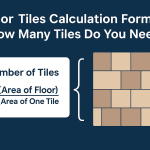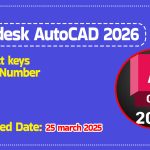Hi welcome to the technology blog. Today we will discuss the history of computer abacus to advance computers. Computer history is very interesting because of their shape and size and operating system. Let’s explain in detail:
Definition of Computer
“Computer” word derived from the Latin word “computer” which means to calculate in the Latin language.
A computer is an electronic device and equipment that can perform certain mathematical calculations and logical operations at a very high speed and with accurate results. In other words, the device manipulates information or data.
The computer can understand data as ‘ 1 ‘ or ‘ 0 ‘. Which is a binary system. The binary system is the language of the computer. The computer All the data can be seen in binary form.
The computer consists of hardware and software.
What can be called a computer?
The computer is a masonry device that can be installed a programmed to carry out arithmetic and logical unit systems. That means the computer is a combination of arithmetic and logical units. So it can be called a computer.
What are the main functions of a computer?
The main function of a computer is four types. Such as
Input
Storage
Processing
Output
Characteristics of computer
Speed
Storage
Automatic
Accuracy
Versatility
All the above are the most essential characteristics of the computer. Without this character that device is not a computer. So we can say the computer included all the above characteristics. This is very important to all computers.
History of Computer
The computer is the most important device that is used everywhere for development, data security, time-saving, fast, accurate results, engineering design, schools, colleges, hotels, banks, theaters, institutes, etc. So you can get knowledge about the computer. You can get knowledge of computers by visiting my page below.
Who invented the Computer?
Charles Babbage invented the computer. Also, he is the father of computers. who made the first digital computer in the world. So after that, his digital computer is accessed by the present generation.
What are the types of computers?
The following are the types of computers:
- Supercomputer.
- Mainframe.
- Server Computer.
- Workstation Computer.
- Personal Computer or PC.
- Microcontroller.
- Smartphone
Overview of history
The history of computers started about 2000 years ago when people used an to abacus calculate the complex sum. In ancient times, counting was used by the finger. However, the limited no of fingers made it difficult, thus different methods to count using stones, sticks, and scratches on rocks or walls.
The early mathematic engineers and scientists had no idea and no imagination of the powerful computer of today, it is due to the need and curiosity of man for a faster way to calculate that led to the development of the computer. So let’s get started with the history of computers. These are the below details.
Abacus
- The abacus is probably the first counting device.
- The abacus is the starting phase of the development of computers.
- It was inverted around 3000 BC in China and is generally seen in China, Japan, and some other Asian countries.
- The first mechanical device for Calculations also performs arithmetical calculations.
Napier’s Bone
The English mathematician John Napier inverted this mechanical device in 1614 AD.
Made the table for fast calculation called logarithm table.
The devices were known as Napier’s bonds and were used for multiplication and division.
Slide Rule
William inverted the Slide Rule in 1620.
The device was based on the principle of logarithms.
Logarithms tables are still used in school and college to solve complicated mathematical calculations.
Pascaline
It is the first mechanical calculator in the world.
The Pascale was inverted by a French mathematician called Louis Pascal in 1642.
Also, the device is called Pascal’s Adding machine.
Leibnitz stepped calculator
A German mathematician Gottfried Von Leibniz 1671 inverted an improved calculating machine.
It can also perform a multiply divide.
Morden digital computers work on the same principle.
Jacquard’s Loom
A Frenchman named Joseph Marie Jacquard a mill owner manufactured punch cards in 1801 AD.
The punch card could automate the Loom for weaving of intricate patterns thus he could control the weaving loom through the set of holes in a card.
Babbage’s Differential Enginee
In 1822, Charles Babbage an English mathematician developed a machine called the Difference Engine.
The machine expected to calculate the logarithmic table with a high degree of precision.
Also, Babbage designed a bigger machine, called an analytical engine. The idea developed in 1833 was considered the most significant step in the history of computers because of his idea only the dream of the modern computer has come true, no one changed his “binary system “that is why he is famous as the “Father of Computer”.
Hollerith Tabulator
It is the first card machine.
Which is an electrically activated computer.
It is used by Dr. Herman Hollenrith to computer the statistics of the 1890 United States census.
He uses the punch card to store data, with the holes representing data values.
Electromechanical Computer
The electromechanical computer burns with the development of MARK-I by Howard Aiken.
The MARK-I is also known as the Automatic sequence-controlled calculator.
50 feet long, 8 feet high.
Atanasoff Beizzy Computer (ABC)
The first all-electronic digital computer was the ABC, designed by Dr, Jhon V. Atanasoff.
It used Vacuum tubes instead of electromechanically related thus factors.
ENIAC( Electronic Numerical Integrator Nad Computer)
This machine was designed in 1946 by two American scientists called Jhon Mauchly and Jhon Preser Eckert.
The ENIAC was the first computer with high-speed electronic digital. The ENIAC computer uses the binary system with a binary digit.
UNIVAC-I
It develops in 1951, Mauchly and Eckert developed the UNIVAC-I( Universal Automatic Computer) computer.
The UNIVAC was the first commercial electronic computer. It works with both numerical and textual data.
ADVANCE
The full form Electronic Discrete Variable Automated Computer.
The improvement in the development of the computer took place when John Von Neumann, the Hungarian mathematician Genius developed the idea of the stored program which would propose a new computer called EDVAC, which would translate stored program concepts into the computer.
So guys how was this article about the history of computers? If you like it and informative please upvote me. Please share this article with your friends who are interested in learning the history of computers.
This is a short information on computer history. step-by-step development of the computer generation and that are categorized into different phases with different machines. like an abacus, slide rule, and so on.
Thanks for Visiting.
What is a computer?
A computer is an electronic device that processes data and performs various tasks using programmed instructions. It can store, manipulate, and retrieve information quickly and accurately.
What are the main functions of a computer?
A computer can perform tasks like calculations, data processing, information storage, communication, and running various software applications.
What are the two main components of a computer?
A computer consists of hardware (physical components like the central processing unit, memory, and input/output devices) and software (programs and instructions that tell the hardware what to do).
What is the central processing unit (CPU)?
The CPU is the “brain” of the computer, responsible for executing instructions and performing calculations. It coordinates the activities of all the hardware components.
What is the history of computers?
The history of computers dates back to around 3000 BC when the abacus, a simple counting tool, was developed in ancient Mesopotamia. Over the centuries, various mechanical devices and concepts emerged, contributing to the evolution of computing:












